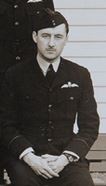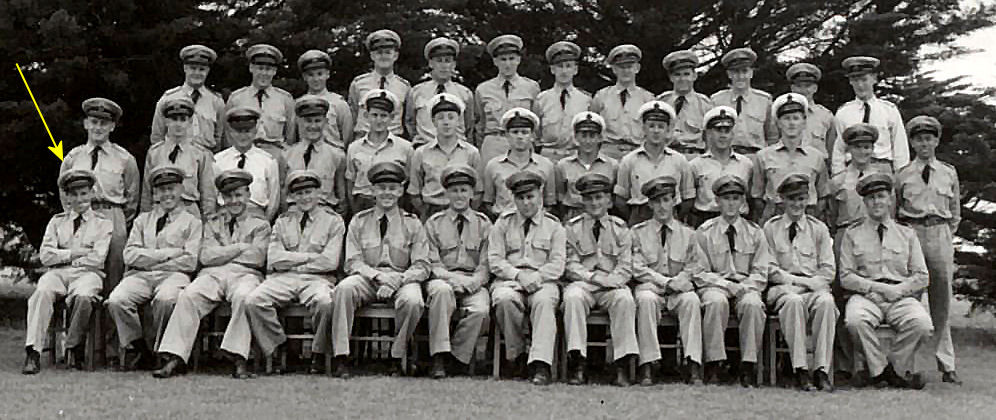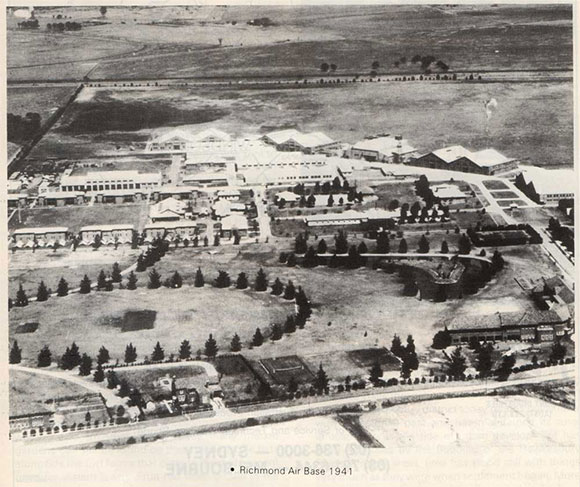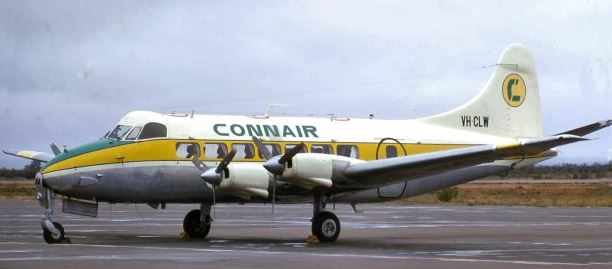|
|
||
|
||
|
Privacy Policy | Editorial Policy | Profit Policy | Join the Association | List of Members | Contact us | Index | Links |
||
|
Back Go to page: 1 2 3 4 5 6 7 8 9 10 11 12 13 14 15 16 17 18 19 20 Forward
|
||
|
John Laming Aircraft and other stuff. |
||
|
|
||
|
Ghosts of Camden Past.
This story started in 1947 when my father Hugh Laming, a journalist with
the Sydney Morning Herald’s London office, was offered the chance of
migrating to Australia to take a post with that prestigious newspaper in
Sydney. Following his demobilization from the British Army after the
end of
For the duration of the war I saw my father just twice, once immediately after the fall of Dunkirk in 1940 when he scrambled back to relative safety in England and the second time when he visited me for just one hour in 1944 while in a convoy of trucks en-route through my home of Tonbridge in Kent during the lead up to the Allied invasion of Europe. His adventures in the Army took him through Greece, Yugoslavia, and the Middle East, then through Italy and finally the invasion of Europe.
During those years – I was seven years old when the war began in 1939 – I stayed with various relatives and friends of my family both in Cranbrook and Tonbridge in Kent. I was spared the direct horrors of war, thank goodness, although like anyone close to London, I witnessed the Battle of Britain from the green fields of Kent far below and ran for cover when low flying German aircraft fired their machine guns and dropped their bombs nearby. They were exciting times for a young boy.
I had joined my father and his new wife in London in 1945, but by now having settled in with a family who had taken care of me since 1943 in Tonbridge, I became terribly homesick for them and my school friends. I disliked the school in London and wept each night until finally my father gave in and I returned to Tonbridge where I boarded with yet another family.
While I enjoyed my time at school, it was called The Judd School,
Tonbridge, it was sports that took my time and interest and not
scholastic
My grandmother Alice lived in the small coastal town of Sheerness on the Isle of Sheppey in the River Thames estuary. I used to cycle to visit her every month or so during the war. Being an only child meant that I was the apple of her eye and she was grief stricken when my father broke the news to her that our family was leaving England for good.
In those days ocean going liners sailed from Southampton and regular train services known as the Boat Trains left from London’s Waterloo Station for Southampton. The great day arrived for us to leave England perhaps forever and as the carriage doors slammed and the guard’s whistle blew at Waterloo Station, my dear old Granny looked at me ever so fondly and she said “This is the parting of the ways young John – don’t forget to write from Australia, will you?” Air travel between England and Australia was only for the very rich and she knew in her heart that she may never see her son and grandson again.
Ten years later I returned to England on leave from my job as a pilot with the Royal Australian Air Force. It was a happy reunion with my grandmother, now frail and living alone in a council flat. For many years she had been ignored by her only living relative, her brother–in-law. He was my old Uncle Alf who had taken care of me in Cranbrook when the war started. Despite living only 30 miles away from each other, there had been no contact. Family feuds ran deep and I had no idea what it was all about. I decided that I must get them together again before I returned to Australia. It was easily done. I took my Uncle Alf for a drive in the beautiful Kentish countryside and simply dropped in on Granny without warning to either of them. The surprised look on their faces was a delight to see and I knew then it was the best thing I could have done to throw them together. After I returned to Australia they took the bus and visited each other many times.
Meanwhile, we sailed from Southampton in late 1947 on the passenger liner SS Esperance Bay of 13,000 tons. This vessel was the sister ship of the Jervis Bay famous in the annals of the sea in 1940 for defending to the death a convoy of ships that had been attacked in the Atlantic by the German pocket battleship “Admiral Scheer”.
Apart from rough seas in the Bay of Biscay where most passengers were confined to their cabins because of sea sickness, the journey was uneventful. One of the passengers was Sid Barnes, a well known Australian test batsman of the Don Bradman era. My cricketing hero at the time was the English opening batsman Len Hutton, who held the then record score of 364 runs in a Test match. When I asked Sid Barnes what he thought of Len Hutton, he replied that Hutton couldn’t bat for nuts and that he, Sid Barnes, was a far better batsman. Taken aback by his blunt reply, I dismissed Barnes as an arrogant boor and avoided speaking to him for the rest of the voyage. I had to admit that he was a fine entertaining batsman for all that.
Also aboard the ship was a laconic Australian bush-man of the Slim Dusty mould who wore a wide brimmed hat and never failed to scare me with stories of red back and funnel web spiders that he said infested Australia gardens, and in particular the trap-door spiders that he said leapt out of the burrows in the lawn and could kill you with one bite of their poisoned fangs. Sailing from Fremantle to Sydney with stopovers at Adelaide and Melbourne, my family stayed overnight with friends at Somerville near Melbourne. There I spent anxious hours treading carefully in their garden on the constant look-out for trap-door spiders. Years later I realized too late that my shipboard friend the Australian bushie, had been having me on because I haven’t come across a trapdoor spider in the wild to this day.
We left the ship in Sydney and the Sydney Morning Herald arranged accommodation at a 19th Century mansion in Belleview Hill called “Ginahgulla House”, where facilities were shared among several SMH families. Nearby was the tiny suburb of Double Bay, nestling on the shores of Sydney Harbour and destined to become one of the wealthiest suburbs in Sydney. I was sent to Sydney High School where after only three months I was pronounced scholastically hopeless. My poor father racked his brains what to do with me as I guess I had proved a great disappointment to him. All I wanted to do was chase girls at Bondi Beach and play cricket.
|
||
|
||
|
|
||
|
Within one day after settling in at “Ginahgulla” I wandered down Belle
view Hill to Double Bay and discovered new friends - school boys of my
age
By this time after only six months my father was unhappy working for the SMH and it was clear he was itching for adventure. After five years of being a soldier in the thick of war against Germany it is easy to see how he and thousands of other military men found civilian life boring. My stepmother had died of a mysterious illness soon after we arrived in Australia, and my father remarried.
Soon after my last school report hit his desk my father left the SMH for a job as a Reuters correspondent in South East Asia. His new (and third) wife was also a journalist and together they talked to me about their future plans to travel and my own future. I was 16 with little talent apart from cricket and sunbaking at Bondi Beach.
In May 1947 the SMH began operations with two DC3 cargo aircraft for newspaper deliveries to northern New South Wales. Soon after, the company purchased two ex-RAAF Lockheed Hudsons and converted them for freight carrying. All aircraft were based at Macquarie Grove, a wartime aerodrome near Camden, and an hour’s train journey south-west of Sydney. The manager of the Sydney Morning Herald Flying Services, as the operation was called, was Captain Harry Purvis AFC, with Captain Doug Swain DFC as second in command. Former RAAF pilots crewed the aircraft with the majority of the maintenance staff also being ex-wartime airmen. Accommodation was provided in flight huts left over from the days when Camden was a RAAF flying training base during the war.
In early 1948, my father took me to Camden to be interviewed by Harry
Purvis, a kindly man with whom I kept in contact over the years I was in
the RAAF. While there was no pressing requirement for an unskilled 16
year old school boy at the aerodrome, it was clear that my father wanted
to get
A few days after the interview and with all my worldly belongings in a battered suitcase covered with shipping labels from our sea voyage to Australia, I arrived by train at Camden railway station accompanied by my father. A wartime jeep driven by one of the SMH pilots was awaiting our arrival and I said a very uncertain goodbye to my father at the railway station. He probably felt a little guilty about leaving me behind. It didn’t worry me too much, I had seen very little of him during the war years and was used to be looked after by others. At the aerodrome I was shown my room in an old flight hut. It had wooden floors, a rusty spring base bed and a straw filled mattress and pillow. In one corner was a chest of drawers, a threadbare carpet left over from wartime days and an electric heater with a long frayed cord that looked positively lethal. Someone gave me a pair of blue overalls and now this was my home. When most of the ground staff went home to Sydney at weekends I had little choice except to stay at the aerodrome most of the time. Occasionally I would hop on the train to Double Bay where I would stay the weekend with my cricketing friend Tony, and his aunt and uncle. Tony was an orphan.
I soon made friends among the ground staff while Harry Purvis quietly kept a watchful eye on my welfare. He knew that my father had left Australia for good and that at age 16 I lacked the maturity to be living without some sort of father figure around. There were five or six ground staff that stayed in my flight hut, including the foreman a chain smoking crude character called Arthur Bone. The storeman Cecil Amey, also lived in the flight hut during the week. Both had served during the war in the Pacific. Amey was a good cook and we would have an enjoyable breakfast of sausages and fried eggs cooked over a Primus paraffin stove. After breakfast dishes were washed work would start at 0800. Occasionally one of the pilots would bunk down in a vacant room in the flight hut, usually when required to crew a Lockheed or a Douglas for an early morning flight.
My jobs included helping out with basic maintenance, cleaning spark plugs and engine cowls, sweeping the hangar and standing by as fire guard when aircraft engines were ground run. When a few months later I reached the age of seventeen, Harry Purvis had me taught to drive the jeep and my instructor was Neville Topliss – an airframe fitter. Driving lessons were on the runway where I was also shown how to lay a flare-path using goose-necked paraffin fired lamps. Topliss was an excellent instructor and within a week or so I drove the jeep solo into Camden where a policeman gave me a driving test. Fortunately, he omitted to ask why I drove to see him solo without first obtaining a driver’s licence. Things were so relaxed in those days. From then on, I drove daily into Camden village to run errands and pick up the lunches for the engineers and pilots.
Once I received my driver’s licence I was given the job of loading the duty Hudson or Dakota with bundles of newspapers destined for Northern NSW, some being air-dropped from a specially designed chute, while larger bundles were off-loaded after landing at Dubbo, Tamworth, Casino, Coffs Harbour and Evans Head. (See HERE)
Loading duty meant arising at 0200 to prepare the aircraft for departure. This involved removing engine and tyre covers, connecting a battery cart, switching on the tarmac floodlights and preparing the flight plan information for the pilots. At 0300 a truck would arrive from Sydney with bundles of Sydney Morning Heralds securely wrapped in hessian bags. The truck driver would sling the bundles into the aircraft where I would load them right up to the cockpit door. These were carefully loaded in order of air delivery with the heaviest bags up front. The pilots would then complete a loadsheet.
While the pilots phoned the flight plan through to Sydney ATC, I would load the jeep with up to 20 flare pots (called goosenecks) and head across the grass airfield until I found the runway – often hard to find if there was fog. Once the threshold was located it was a case of every 100 yards, stop the jeep, lay down a flare and ignite it with a flaming taper. In strong winds the flares would sometimes go out and on several occasions there was only four or five flares alight for the mile long runway. Leaking paraffin would drip from the flares on the floor of the jeep and on several scary occasions I was forced to use an extinguisher to put out a burning flare.
After the flare path was laid it I would drive back to the tarmac to
prepare for the engine start. For this a large CO2 fire bottle with an
extendable
Then at 0400 after receiving the all clear, the pilot started the first engine. Seconds later gouts of angry red flames licking from the exhaust pipe heralded a rich mixture start. From the startled look on my face and the reflection of the flames on the tarmac the pilot guessed the problem and immediately opened the throttle wide. With a bit of luck, the engine would soon catch and run normally. That was the easy part.
If prior to start the throttle was cracked too far open, there would be severe back-firing through the carburettor followed inevitably by a dull red glow deep inside the engine air intake, signifying an intake fire. The pilot would stop turning the propeller, switch off the magneto switch, and call for the redoubtable fire-guard to do his stuff. This required this 17 year old general hand to duck carefully between the now stationary propeller blades of the offending engine and the leading edge of the wing, prop the ladder against the wing at the same time praying that the pilot’s finger did not inadvertently actuate the starter switch again.
|
||
|
||
|
|
||
|
From there it was a simple case of lugging the CO2 bottle up the ladder on to the wing, scrabbling over the top of the engine cowls and leaning over the edge of the air intake to direct a squirt of CO2 at the flames deep inside. It did not help that the intake lip was by now damned hot, while for some reason it never occurred to me that I should have worn gloves to protect my hands. The risks were just part of the job, while the hooded ghosts of my vivid imagination who skulked between the darkened hangars would sense my fear and move closer. Thank goodness it was only the Hudson’s engines with their cantankerous Ceko carburettors that caused all the trouble with starting –and not the Strombergs of the Dakotas
Once the fire was out I would clamber back down to the relative safety of the tarmac and give the pilot a thumbs up for another go. I don’t think anyone thought of topping up the CO2 bottle after using it and I wonder now at the panic that would have occurred if the bottle had run out of puff during this little exercise. After all, we averaged a fire a week.
With both engines now throttled back to idling, the pilot would signal
for me to disconnect the battery cart and remove the wheel chocks. More
often than not there would follow much feverish kicking and profanity
because I was slow to learn in the early days that you don’t place
chocks against the
At 800 rpm idle power, the rich fuel-air mixture would ignite in the exhaust stack and at night especially the yellow glare of the flames as they licked hot over the cowls next to the battery lead, was quite blinding. I hated that job and more so if the battery cart plug was jammed too firmly into the socket pins requiring much pulling and still more profanity.
With the ladder and fire bottle well away from the wing tip and after a thumbs up from me, the Hudson would taxi slowly away from the hangar and its bright arc lights to disappear around the corner of the flight huts into the night. On cold misty mornings it was an eerie sight to watch the navigation lights vanish into the fog leaving behind just the throaty sound of rough idling engines in the still night air.
Minutes would pass, then across the frost covered airfield the howl of engines being run-up to high power would carry over the reaches of nearby Camden Weir while a mile away, people of Camden village asleep in their beds would wake and curse the Sydney Morning Herald for disturbing their sleep.
Then silence, except for the quiet muttering of the big Pratt and Whitney radials as they idled barely audible, from where I stood listening at the corner of the flight hut. From the timing I guessed that the pilots were now carrying out their pre-take off vital action cockpit checks. Harness, Hatches, Hydraulics, Trim tabs, Mixtures, Pitch controls – I knew them off by heart.
The take-off would begin, the noise of the engines amplified in the still of the night. In the early morning mist I could see nothing, but knew that soon the noise would fade away as the aircraft climbed towards the north. Thirty minutes later it was time to drive out to the runway, there to douse the hot cans of the flare path and return them to their storage shed reeking of burnt paraffin.
It was almost dawn as I put away the chocks and engine covers, plugged in the battery cart for its recharge, switched off the arc lights and locked the hangar doors. Mist would drift between the hangars and I was never game enough to shine my torch in their direction lest shadows moved toward me in the night. From over the valley the first of the cockerels would crow, heralding the cold dawn and I would shiver, but not from the cold. Camden aerodrome was host to hundreds of pilots under training during the war and inevitably lives were lost in crashes. Maybe their ghosts came out at night to haunt young and impressionable general hands like me. If this feeling happened to the other loaders, they never mentioned it. Safely back in bed in the flight hut I found the loud snoring of fellow workers strangely comforting. I do believe the racket frightened the ghosts away, too.
Sometimes an aircraft would taxi out for departure, only to return with a faulty engine. The big radial engines were prone to spark plug fouling at idling power and despite attempts by the crew to burn out lead deposits on the plugs by a lengthy high power run-up, the problem could only be solved by a complete plug change. An engineer would be pulled grumbling from his bed to change the plugs. A second aircraft was usually available on standby and if the defect could not be rectified quickly, this aircraft would be hurriedly loaded and sent on its way.
|
||
|
|
||
|
|
||
|
It was yet another foggy night when I dispatched Lockheed Hudson VH-SMK. I watched its navigation lights fading into the mist as it taxied carefully toward the threshold of runway 06. There was always this strange compulsion to listen for signs of rough running of the engines during the run-up. The aircraft was invisible in the fog but after several months of listening to the sound of running engines I could pick a suspicious change in engine note.
On this particular morning the run-up sounded normal and I listened for the high power that indicated the start of the take off. Several seconds passed and I guessed the Hudson would be almost at lift off speed. Without warning, the noise of the engines stopped and I heard the terrible sound of tortured tyres as the pilot aborted the take off run. I waited for the crash but there wasn’t one. Just the sound of quietly idling engines in the mist. I was about to leap into the jeep and drive in the direction of the runway when it occurred to me that I might run into the Hudson in the fog if perchance it returned to the tarmac. So I sat tight and waited – and listened intently. Not long after I heard the sound of another take off attempt and this time to my relief the Hudson got airborne and departed to the north.
I waited an hour this time before driving out in the cold dawn to pick
up the flares. Driving down the centre of the runway I came across two
long skid marks from the Hudson’s tyres. The black rubber marks curved
off the runway on to the grass verge some two hundred yards after they
started. I
In later years I thought carefully of that incident and put it down to several possibilities. One, that the pilot encountered a patch thick fog during the take off run and lost sight of the runway and aborted. This is the most likely reason, given that the visibility was very poor in fog at the time. If any of the flares had run out of paraffin and extinguished themselves (always a possibility), then with large gaps between the flares it would be almost impossible for the pilot to maintain an accurate direction on take off solely by visual reference.
Or maybe the co-pilot, an aero club trained pilot with very low experience, was carrying out the take off and simply lost control early in the take off run as he tried to raise the tail. Gyroscopic and engine torque effect could cause a savage swing during take off in the Hudson unless countered with immediate corrective rudder control. Judging from the angle and severity of the skid marks on the runway, hard braking must have taken place at high speed. Either way, it would have been prudent for the pilot to return to the tarmac for a damage check. But that didn’t happen.
|
||
|
||
|
|
||
|
Soon after arriving at Camden I had my very first trip in an aeroplane. Following an engine change a test flight was needed. Harry Purvis took the opportunity to pile a few ground-staff into the back of the Hudson, including the engineers responsible for the engine change. There were no seats or safety belts so everyone sat on the metal floor. There was also no sound-proofing and the racket from the engines at high power was painful to the ears. It was only a short flight but enough to cause airsickness to a couple of small boys who were the sons of one of the engineers. My main memory of the trip was the shattering noise level and pains in my ears when we descended. There was no safety briefing and I had no idea how to clear my ears.
The early morning dispatch duties enabled me to have the rest of the day off for sleeping or leisure. I spent many happy hours swimming in the weir at the southern extremity of the aerodrome sometimes joined by off duty pilots who in turn would invite nurses from nearby Camden hospital. Most of the aircrew had flown operationally during the war. Harry Purvis was one of Australia’s pioneer airmen in the 1930’s who had flown with Sir Charles Kingsford Smith, or “Smithy” as he was well known to all Australians. Doug Swain flew Mosquitos over Europe, while Bill Selwyn had been a Wellington pilot flying early bombing missions over Germany. Harold Gibson-Lee flew pre-war in Vickers Wellesley single engine long-range reconnaissance aircraft (right) in the Middle East. Each would have had fascinating stories to tell, but as a teen-age boy I was not one of their group and therefore never party to bar talk where their stories would have come out.
At age 17, one is very impressionable. I tagged along with a pilot called Dick Cruickshanks himself only 24 but with a swaggering dashing manner. He had joined the RAAF during the war but it ended before he saw action. Knowing that I had no relatives and no doubt feeling rather sorry for me, Dick would ensure that I had company by inviting me along with the others to the local picture house, or for a dip in Camden weir.
Propped in a corner of the hangar was a Spitfire drop tank which had
been fashioned into a silver canoe. In free hours we would put the canoe
into the back of the jeep and drive to the weir where I spent many happy
times paddling by myself up and down the reaches of the Nepean river
which flowed
My school chum Tony Buck (he preferred that surname rather than Buckinini which drew jeers of racism at school) would give me a bed at weekends at Double Bay and time would be spent ogling nubile girls at either Redleaf Swimming Baths - right (Now Murray Rose Pool) or Bondi Beach. On Saturday nights I would attend dancing lessons at the Phyllis Bates School of Dancing. It was clear to me that to win a heart (and hopefully once the ground work was laid, so to speak, a body) one had to have more social skills than a beery “show us yer tits”. So I learned to dance properly, ball room style. It brought me in immediate contact with a bevy of attractive young women of my age – including as it turned out, my future wife. Boys would sit along one side of the huge floor and girls on the opposite side of the room. When the feisty Miss Bates struck up the music on an old gramophone, boys would advance uncertainly on the best looking girls who in turn practiced their best looks of scorn. One judged the success of the evening by the number of times an offer to waltz was accepted either with marked reluctance by a good looker or, if desperate, by the eager clasping of waists by a flat chested knock kneed flapper. Either way, anything was better than being a wall flower. Booze was not permitted and it therefore took raw courage to cross that no-man’s land of open floor to seek a willing female.
During one of my week-ends at Double Bay, I found out that a Hudson was scheduled to operate from Sydney to Dubbo. Dick Cruickshanks was required to position the Hudson from Camden to Sydney, a flight of a mere ten minutes. Although two crew were required for newspaper drops, the Hudson could be flown by one pilot and so I rang Harry Purvis who gave me permission to sit in the copilot’s seat for the trip. A bus to Central Station and I hopped on the first train to Camden which took about two hours, and then hitch-hiked from Camden station to Macquarie Grove aerodrome just in time to find Dick pre-flighting the Hudson. It was to be one of my proudest moments almost akin to one’s first solo, as I sat in the copilot’s seat for the trip with Dick allowing me to operate the flaps, tune the radio frequencies and generally act like a real copilot. After landing on runway 07 at Sydney, I opened the cockpit sliding window and gave an ever so casual wave to the crews of the various airliners that we taxied past. Their equally casual waves back from open windows gave me that wonderful feeling of being “in the club” of aviators. Clearly those aircraft were not pressurized!
When rostered for early morning dispatch duties (starting at 0200), I could either knock off for the day after retrieving the flares and closing the hangar doors or, after a short kip between 0500 and 0700, carry on with my normal hangar duties. This way I could build up spare days off when the extra hours worked were taken into account. I asked permission to fly as a passenger on newspaper runs using my spare hours accrued. Harry Purvis and Doug Swain knew I was keen to be a pilot so the OK was given.
I would help the rostered loader with packing the newspapers into the Dakota and lay the flare-path, then settle down in the cabin for the first leg to Tamworth where the airstrip was part of the local race-course. Standing in the cockpit for take off and landing was an accepted part of the game, mainly because there were no seats and therefore no safety belts. In turbulence you grabbed whatever part of the aircraft you could find and hung on. A typical morning’s flying consisted of off-loading the first bundles to a waiting newsagents vehicle at Tamworth usually around 0600, then a departure over the mountains and dropping bundles at low altitude into fields at Armidale, Glen Innes, Kempsey, Tenterfield, and Grafton with landings at Casino, Evans Head and Coffs Harbour for refuelling or occasional freight pick up. Early morning low cloud meant that some bundles could not be dropped simply because it was too dangerous to come in at ground level in the mist. That being the case, the bundles of newspapers would be off loaded at the next stop and transported by ground.
For the air drops the bundles of newspapers would be loaded on to a tilting chute at the open freight door at the back of the Dakota. On receiving a green light or bell from the captain, the copilot who was down at the back of the fuselage, would heave the bundles overboard with the Dakota flying slowly at 95 knots. It was a technique used in supply dropping during the war, with the despatcher (usually copilot or volunteer ground staff like me) down the back anchored by a cable to stop himself falling overboard in turbulence.
When he was flying the Dakota, Doug Swain (awarded the DFC July 1945) would also drop a single rolled up Sydney Morning Herald to some friendly farmers who lived on country properties among the mountains near Tamworth. He would circle the property house then drop half flap, reduce the airspeed to 95 knots and come in low over the farmer’s house. The copilot would slide open the starboard window and on the order from Doug, throw the paper down inside the arc of the starboard propeller. In return, boxes of fruit would be waiting each week at Tamworth aerodrome as a gesture of thanks from the farmer. Back at Camden, Doug would give the apples and oranges to the ground staff. It was a happy arrangement.
Quite often when the copilot was down the back arranging the bundles of newspapers for the drop, the captain would let me fly the aircraft from the right seat and it wasn’t long before I came quite adept lowering the flaps, changing the throttle and pitch controls, selecting carburetor heat and keeping the flight plan going. By the time I left the SMHFS I had flown over 120 hours in the Dakota and 20 hours in the Hudson as supernumary crew. During the voyage from England my ambition was to be a professional cricketer. That gradually changed when it was obvious that I would never get above 4th grade standard in the Sydney cricket club of Paddington. After a year at Camden, I saw the pinnacle of success as being a second dickey on a Dak – translated as first officer on a DC3. That moment came four years later on 14th May 1953 at Darwin when as a RAAF Sergeant-Pilot I flew my first trip in a RAAF Dakota. The pilot was a former wartime Spitfire pilot Wing Commander Glen Cooper CBE DFC AFC, at the time Commanding Officer of RAAF Base Darwin. While I had not done a formal conversion course on the Dakota in the RAAF I was soon at home with the various cockpit controls after my experiences with the SMHFS. While retaining an interest in cricket over the next few decades, the few times I held a bat in my hands was when facing my fast bowling daughter in the nets at our local Indoor Cricket Arena.
|
||
|
||
|
|
||
|
Both Doug Swain and Harry Purvis were check pilots on the Herald’s Dakota and Hudson and to reduce costs instrument rating tests were sometimes carried out during newspaper runs. The method of simulating instrument flight in cloud was with two-stage amber screens clipped to the windscreen of the cockpit. The see-through amber coloured screen coupled with blue tinted goggles worn by the pilot meant that he could not see outside due to the optical qualities of the amber screens and blue goggles. The check pilot who did not wear the goggles had normal vision through the amber screens which in turn acted as a handy sun shade. It was a superb method of cloud simulation and one used by the RAAF for many years.
One of the manoeuvres required of the instrument rating was competence at recovering from steep attitudes with a failed artificial horizon and directional gyro. The early gyroscopic flight instruments had low toppling tolerances and when these vital instruments gave up the ghost at steep angles of bank, the pilot had to recover to level flight using his primary instruments of airspeed, altimeter and turn and balance indicator. This last named was also called the Bat and Ball in reference to its small spirit level and cricket bat shaped gyroscope operated turn indicator. To recover from steep inverted attitudes and spins using these primary flight instruments in cloud or at night with no visible horizon, took considerable flying skill – not evident in today’s airline pilots.
It should be remembered that most of the SMHFS captains were former RAAF pilots with considerable wartime operational experience. Doug Swain in particular had won his DFC flying fighter bombers against the Luftwaffe over Europe. He was adept at hurling his Mosquito around the sky avoiding enemy fighters intent on killing him. When training copilots in the Herald aircraft he tended, rightly or wrongly, to throw the Dakota around the sky like a Mossie.
It was during one of these training exercises which took place during the return trip to Camden from Evans Head, that I saw manoeuvres in the Dakota the thought of which makes my hair stand on end decades later. The copilot was Vic Schuback, an aero club trained pilot who had got a job with the SMHFS after being a flying instructor at Bankstown in 1948. Swain had placed the Dakota in steep descending turn on instruments and handed over control to Schuback to test his recovery skills. I hung on like grim death to the metal structure forming part of the hydraulic system panels and managed to snap a quick photo from a Baby Brownie camera that I carried with me. Time dims all memories but this one was etched in film and easily recalled. The photo shows the amber screens clipped in to the windscreen and the surf of the Pacific ocean dashing against a rocky coastline 3000 feet below the aircraft. The nose of the aircraft is at least 50 degrees below the horizon and for a Dakota that is dangerously steep. And the copilot is attempting to recover to level flight without any outside reference to the horizon. I recall getting thoroughly airsick on that occasion.
I think the episode frightened Vic Schuback, too. But he got his instrument rating. Vic was no shrinking violet. A tall man, he was an ex-Australian army soldier who had fought the Japanese in the Pacific islands during the war. One of his jobs was to protect civilian coast-watchers from Japanese forces intent on locating their position. He later became a captain on F27 aircraft of East-West Airlines.
|
||
|
|
||
|
|
||
|
One day at Camden I watched Lockheed Hudson VH-SMK taxi around the corner of the flight huts and park on the tarmac in front of the main hangar. The pilot was my idol Dick Cruickshanks. During the preceding weeks I had decided to learn to fly and bought the various books and maps needed including a Dalton Computer with which to flight plan. What with constant early morning get-ups to dispatch aircraft which left me weary at times, I had little time to study. The computer was still a mystery to me and it would be nice to have some help in this area.
I was sweeping the hangar floor when Cruickshanks and his copilot disembarked from the Hudson, and navigation bags in hand walked towards the hangar offices. Both wore the white flying overalls with pilot wings and gold epaulettes and Dick wore his old Air Force cap. I was dressed in dirty overalls, and wielded a large broom. I thought I might ask Dick if he could one day spare the time to teach me how to work the Dalton computer, which was just a circular slide-rule.
Putting down the broom, I crossed the hangar floor and caught the Hudson crew as they went into the operations office, asking Dick if he could spare time to teach me flight planning using a computer. Now I must admit I looked a bit scruffy along with bleached hair with which I had hoped to win a few hearts at Bondi, but nothing could have prepared me for his reply. He took a look at my clothes and the long handled broom propped against the hangar wall and something like “Forget it, John – you’ll never make a pilot”. With that, both pilots disappeared into flight operations while I returned red-faced to wielding the dirty great broom. Word got around and somehow Harry Purvis my boss got to hear of this little episode. But more of that later.
On the 31st December, 1949 I was in Sydney during the Christmas break intent on celebrating New Year’s Day with my good friend Tony Buck, ogling nubile young women surfing at Bondi Beach. There was news on the radio that a Lockheed Hudson of the Sydney Morning Herald Flying Services bound for Dubbo, had crashed at Camden shortly after midnight on New Year’s morning 1st January 1950. Both pilots were killed. They were Dick Cruickshanks and his copilot Bruce Purvis, the nephew of Harry Purvis.
There had been light drizzle and nearby thunderstorms when the Hudson took off at 0056 from runway 06. A sole eyewitness saw the lights of the aircraft as it climbed normally and nothing indicated any sudden change in the attitude or direction of the aircraft. Soon after passing the end of the flare path, and at a height estimated to have been between 150 and 200 feet, the aircraft dived steeply into the ground and fire broke out instantaneously.
I caught the first available train back to Camden as soon as I heard the news and hitch-hiked to the crash site just a few hundred yards from the aerodrome. I had seen aircraft crashes during the war and knew what to expect. The wreckage of the Hudson had cooled down in the rain leaving that awful smell of burnt metal. Scattered around the remains of the Hudson were smouldering bundles of newspapers. The whole of the fuselage from the nose to a position aft of the entrance doorway was completely destroyed by fire. The only substantial damage to the tailplane assembly was the lower section of the starboard fin below the tailplane. The registration letters SMK were still visible.
The Accident Investigation Board were unable to determine the reasons for the loss of control, but there were indications that the starboard engine may have failed. This was the second crash of a Hudson. Shortly after the Herald started operations in 1947, two pilots were killed when Hudson VH- SMJ stalled during a trial dropping flight at Muswellbrook. It was discovered that when the copilot was at the rear of the aircraft during the turn toward the drop-zone, the centre of gravity of the Hudson went beyond the aft limit, causing the Hudson to stall. At that low altitude, there was insufficient room to recover.
|
||
|
||
|
|
||
|
A few weeks after the crash of VH-SMK at Camden, it was clear that the risks involved with air drops of papers was attracting attention from Sydney Morning Herald management. Two aircraft had been lost in just over two years, and perhaps Harry Purvis foresaw the inevitable time when another crash would see the operation closed down by the Department of Civil Aviation. I was 18 years old with no technical skills and Harry was aware that I had no relatives to go to if the operation closed down. With that in mind, he arranged that I should be transferred to work in the main offices of the Sydney Morning Herald in Hunter Street, Sydney.
I bade a sad farewell to my work mates at Macquarie Grove and with a heavy heart started work as a clerk in the advertising department of the SMH. Despite making new friends among those of my own age at the Herald, I disliked the job and missed the atmosphere of Camden. To make things worse I was now responsible to find somewhere to live. Tony Buck and his relatives put me up in their spare room for a few days while I scoured the newspapers for bed and breakfast rooms. One middle aged bitter divorcee took me in making it quite clear that she would give me breakfast but no other meals. One day I brought home a bag of potatoes intending to throw them into a pot on her stove. I could not cook, but boiling a few spuds was not beyond me.
A curt reminder that I was not permitted to cook in her house, made me realize that I needed to get away from this cranky old biddy into a place offering full board. By now my spirits were at rock-bottom and I began to miss my long dead mother who had died in England at the young age of 33.
I soon found a more friendly house run by another divorcee with two young children. She was a kindly lady and a magnificent cook supplying a hearty breakfast to another boarder and myself, a takeaway lunch and a lovely variety of hot dinners on my arrival home from work. Things began to look up for me. My wages were low and just enough to cover bed and board with few luxuries. The time had come to look to the future, so I applied to join the Navy Fleet Air Arm as a pilot. I was knocked back without even the chance of an interview. The reason was not given, but I suspect it was because I left school in 4th year without the Intermediate Certificate and with my peroxide surfie hair I probably came across as a little immature.
Meanwhile back at Camden on 12th October 1950, a Dakota VH-SMH, the flagship of the Sydney Morning Herald Flying Services, failed to return to base after a routine newspaper run to northern NSW. A search located the wreckage of the aircraft which had flown into the side of a hill in cloudy weather near Bungulla, NSW. All aboard were killed.
Then an accident occurred at Camden that shocked even the most hardened of ground staff who had been in the war. One of the cleaners was Tony Pinner, who had migrated from England and who with his family lived in converted married quarters on the airport. His son, Len also worked as a cleaner. Tony was a keen frightfully energetic type of man who loved his job and was always running between tasks. As soon as an aircraft taxied in he would dash in with a pair of chocks to place them in front of the wheels. In fact he took a hell of a risk because the propellers may still be winding down when he put the chocks in place.
Doug Swain had a technique of taxying the DC3 into the open hangar, then holding one brake on, he would gun the outboard engine and pirouette the aircraft on one wheel until the aircraft had completed a reversal of direction so that it’s nose was pointing out of the hangar. Then he would apply the park brake and cut both engines. Looking back in time, I can now see it was quite a risky and unnecessary manoeuvre. I had seen it done many times and the wingtip clearance from the walls of the hangar was sometimes barely six inches.
In this case, Doug had completed the turn on one wheel and after setting the parking brake, he cut both mixture levers to stop the engines. As the sound of the engines died down, Tony Pinner did his usual rush under the wings to insert the chocks. He must have either slipped or for a fraction of a second became disorientated. Either way, he never saw the down going propeller that smashed open his head killing him instantly. It was an accident waiting to happen because clearly it was a risky business turning a DC3 with engines running in such a confined space. Most engineers would have waited until the propellers had stopped rotating before inserting wheel chocks. But poor old Tony was not the brightest of people and he paid the ultimate penalty for rushing in where others feared to tread.
Back in Sydney, I needed money to buy some decent clothes. For the past couple of years I had been wearing my father’s hand-me-downs that by now were threadbare. Anyway, his rather flashy houndstooth jacket looked out of place on a teenager. The money came from overtime working till midnight as an assistant to the SMH advertising reps while they drove a car around the city picking up classified advertisements left at certain drop points in the inner city. My driver would screech to a halt somewhere in the city, I would leap out of the car and grab bundles of advertising copy from a drop point. Then back in the car – no safety belts in those days – and hurtle around corners on two wheels until reaching another pick up point in a back street. Speed at picking up was vital as there were deadlines for publishing a few hours later. Some of the drivers were safe but others were maniacs who should have been picked up by the police patrolling the night streets of the city. The overtime was good but not for my nerves. I gave it six months and went back to mundane clerical work.
I applied for the RAAF. My father wrote to me from all over the world imploring me to forget applying to be a pilot but to accept any job offered in the RAAF. He knew the Service meant security for life and three meals a day, and in any case he was worried about my future and felt guilty about leaving me to cope alone. His letters were a source of great comfort to me and I willingly wrote back with news of my job and aspirations.
I wrote to the Headmaster of my former school in England stating that I wished to be a pilot in the RAAF and could he send me a letter stating that my education there was the equivalent of the NSW Intermediate Certificate.
Now I am certain he would have no idea what that standard was, but he read between the lines that I needed something on paper that looked good. Back came a school crested letter with an impressive Latin motto and words to the effect that I was jolly good lad who excelled at cricket and that he was sorry to see me leave for Australia – and by the way, the education that I had received was well up to the standard of the NSW Intermediate Certificate.
In July 1950 I attended a medical and interview at the RAAF Recruiting Centre at Rushcutter’s Bay, a few minutes in the tram from my digs in Double Bay. I passed the medical but not the interview. Fifty years later I received copies of my Service records from the time of the first interview to when I left the RAAF. Comments made by the interviewing officers were: Remarks. Has flown in aircraft dropping Sydney Morning Herald. Aptitude unsuitable. Keen on flying. Young and mature for age. Bright lad. Also: English lad. Cocky little character. Plenty of drive but I doubt if he is as good as he thinks” OUCH! And: Emigrated to Australia 1947. two years cadet Brit Army. Too young for ATC. 150 hours with SMH Flying service – has acted as 2nd pilot at times to relieve 2nd pilot. Bright, keen. Good lad. Will be a bit young.
Needless to say I was knocked back. I wrote to Mr M. Langslow, the Secretary to the Air Board and asked him to give me another chance to make the RAAF my career. He replied maybe and that he would forward my application for further consideration – whatever that meant.
|
||
|
||
|
|
||
|
Meanwhile, at my digs where the food flowed lavishly, the lady of the
house found herself a new man, so I and the other boarder were asked to
move on. I found a bed and breakfast place nearby. I knew that the next
RAAF interview, if I got one, would be my last chance to be a pilot.
This called for
My log book shows that on the 3rd March, 1951, I flew 55 minutes in Tiger Moth VH-BNM under the instruction of one Mr Stan Birtus. A week later, and another dual session; this time with Mr Jan Kingma. Both instructors spoke with heavy Eastern European accents, so thick as to be practically unintelligible when heard through the Gosport Tube, the primitive intercommunication system in Tiger Moths. This didn’t look too good as my overtime money was quickly running out and I didn’t have a clue what these chaps were trying to teach me. Then came yet another instructor for lesson No 6 on medium turns. He was a cranky bloke with a black moustache. His name was Tas Dalton and he gave me the impression that he was bored witless with instructing. He also rarely spoke during the 35 minutes that we flew. Despite this lack of decent instruction for my hard earned money, my flying in the Herald Flying Service aircraft began to pay off as I gained confidence.
Then on 5th May 1951, I was blessed with a wonderful instructor called Bill Burns, licence No 1524. He was a flight safety officer with Qantas and instructed at weekends to keep his hand in. I believe he had flown Hudsons in New Guinea during the war. Under his patient tutelage I practiced circuits and landings until on May 26th in Tiger Moth VH-AUO, he climbed out of the front seat, disconnected the forward control column, tied the front seat straps securely and sent me off on my first solo. I had flown a total of eight hours dual and at the end of that day 25 minutes solo. Bill Burns then wrote in my log book the treasured words:
“I consider John Laming competent to fly Solo by day on DH82 type aeroplanes. He has been instructed in and found competent to recover from all spins and stalls”.
It was time to have another crack at getting into the RAAF.
That happened a month later when I was called for another interview. One of the interview panel was Squadron Leader Paul Metzler. This time around the comments were more encouraging. English lad. Came to Australia 3 months after leaving school. Herald Flying service. Private Licence – this at weekends. Definitely keen on RAAF. Suitable. And: Bright, alert and mature type. Appears very keen on flying. Yes.
Although I did not know it at the time, Paul Metzler (right) had been a Catalina pilot in the RAAF at the time the Japanese attacked Pearl Harbour. He was subsequently shot down by carrier-borne fighters of the Japanese invasion fleet sailing north of Rabaul. After many hours in the water without a life jacket he and his remaining crew were picked up by a Japanese cruiser and eventually sent to Japan as a prisoner of war. On being repatriated after the war, he resumed his RAAF career. I met him again in 2006 in Sydney, where he lives in retirement.
Soon a telegram arrived from Mr Langslow saying would I accept the appointment of Trainee Pilot/Navigator in the RAAF. My bloody oath, I would. Having quickly accepted his kind offer I wondered about this pilot/navigator thing on the telegram. After some thought I decided that to be a pilot you must also be able to navigate and therefore the telegram was just telling me the bleeding obvious. Not so, as I later discovered. What it really meant was that if I failed to make the grade as a pilot, I would be re-mustered as a navigator. I was not good at maths and I would have almost certainly failed a navigator’s course. Fortunately it never came to that.
On 1st October 1951 I was among over one hundred other recruits that arrived late in the evening at the RAAF No.1 Flying Training School at Point Cook near Melbourne, Victoria. The Commanding Officer was Paul Metzler who had been on my interview board where I had worn my new suit bought at great expense. We were allotted individual rooms in old wooden buildings and settled down for the night.
Suddenly a group of RAAF officers stormed into our huts, and demanded that we immediately clean our rooms, polish windows and mow the grass outside. I was directed to an old push-mower and ordered to get to work. It was dark outside and as soon as I pushed the mower I realized it was sticky with fresh paint. Within seconds my new suit was ruined. Inside the huts the others quickly realized after the officers had gone that we had been spoofed. The “officers” were in fact trainee pilots from a senior course soon to graduate.
One of our course was a tough Sydney first grade rugby player. He gathered a few like minded chaps and barging into the senior course cadets’ quarters, hosed them out of their beds with soda acid fire extinguisher bottles. Honour was satisfied. At roll-call in the morning it was discovered that two of our number had done a bunk during the night. Obviously the events of the night before made them decide that RAAF life was not for them.
About this time, the Korean war was hotting up and aircrew recruiting increased. Previously all training from ab-initio to advanced flying training had taken place at Point Cook. Now the RAAF decided to split future training into three parts. Two former wartime aerodromes at Archerfield near Brisbane and Uranquinty near Wagga Wagga NSW were opened up and in January 1952 my course was posted to No1 Initial Flying Training School at Archerfield to undergo flight grading. Archerfield was a grass field with Mustangs and lots of Tiger Moths. Tucked away in the cavernous hangars adjacent to the aerodrome were De Havilland Mosquitos fighter-bombers awaiting disposal. Our instructors were all ex wartime pilots some of whom had flown Mustangs in Korea.
Of the original 100 trainee aircrew from all over Australia that had started at Point Cook three months earlier, around 25 were destined to be radio operators - known as Signallers. These went to the School of Radio at Ballarat for training, while the remaining 75 of us were to be graded as pilots or navigators. Each of us was given ten hours of dual instruction in Tiger Moths. The flight commander or CFI would test each trainee at the five and ten hour mark. Those above a certain standard became trainee pilots; the rest were sent to the School of Air Navigation at East Sale, Victoria to train as navigators. The few hours that I had flown on civilian Tiger Moths now paid off and I was lucky enough to do well at flight grading.
After nine more months of training on Tiger Moths and Wirraways, I graduated as a RAAF pilot on 8th December 1952.
|
||
|
|
||
|
|
||
|
There followed 18 enjoyable years in the Service while logging 10,000 flying hours. My last posting was with No 34 (Special Transport) Squadron based at Canberra where for seven years I was a QFI flying Dakota, Convair Metropolitan, Viscount and HS 748 aircraft.
Back at Camden things were not going well for the SMH Flying Services and in May 1952 the operation closed down as far as newspaper deliveries were concerned; the aircraft being chartered out to other operators. Harry Purvis had resigned leaving Doug Swain in the Manager’s chair.
Sometime in early 1954 I dropped in to visit Doug Swain, by now behind a desk at the Sydney Morning Herald. Doug had been unable to get another flying position so the Herald helped him out with a clerical job. I was now 22 years old and feeling very proud of myself in the uniform of a RAAF Sergeant Pilot when I walked into his office – a dingy little room with no natural light. Doug seemed depressed as he listened politely to my rabbiting on about the adventures I was having in the Air Force. It didn’t help that I talked incessantly of how I flew Mustangs, Vampires and Lincolns and was even second dickey on a Dak.
In my enthusiasm to show Doug how well I had done after my time at Camden, I lacked the sensitivity to realize how much Doug envied my starting out on an exciting career in the RAAF when he at age 35 had left flying behind for a desk job. At my age he had been flying Mosquitoes at war, winning the Distinguished Flying Cross for bravery in the face of the enemy.
It was time to say farewell and for me to return to the nearby RAAF base at Richmond where I had landed a few days earlier in a Lincoln bomber from Townsville. As we shook hands and parted, Doug mentioned briefly that he hoped to receive DCA approval in the near future to resurrect the newspaper runs again using Hudson VH-SML. If the preliminary operation proved successful the SMH Flying Services would resume full services. I wished him good luck in his venture, as I knew how much he wanted to fly again.
It was the last time I ever saw Doug Swain. A few months later, on the first flight of the new service, Doug and his Hudson disappeared into the cloud covered reaches of Barrington Tops, near Dungog. The date was 14th September 1954. The aircraft was not located until 15 months later. All three occupants had perished in the crash.
One of the trips that I did with the VIP squadron at Canberra involved flying the Governor General Lord Casey on a tour of outback Queensland in the Convair 440. We landed at Cloncurry where after an official welcome the Governor General was whisked away into town for a beer or two. On these occasions, we flew the regal pennant from the cockpit window when taxying in after landing. The Convair was beautifully polished as befitted a VIP transport aircraft and as crew we wore white flying overalls. Very flash were the overalls but useless at night because they reflected off the windscreen making it quite distracting when landing.
With time to spare, I wandered over the tarmac to have a look at a dusty De Havilland Heron that was parked in one corner. It belonged to the Alice Springs operator, Connellan Airways.
|
||
|
|
||
|
|
||
|
The pilot, who was about 60, emerged from the cabin, his bearded face vaguely familiar from my distant past. I recognized his voice as soon as we shook hands. The beard had me tossed though, as he had not worn one when I knew him in my younger days. It was Harry Purvis, my former boss at the SMH Flying services. He looked first at me, then at the silver Convair with its royal pennant fluttering from the cockpit masthead and with a broad grin said “Well, John – old Dick Cruickshanks was wrong, wasn’t he?” He had remembered the time when I was 17 and Dick had told me that I would never make a pilot.
I kept in touch with Harry for several years after that meeting. He retired to Cairns where sadly he died of prostate cancer. I still have his letters. In 2001 I re-visited the aerodrome at Macquarie Grove. The original Sydney Morning Herald hangar was still there, although now full of Cessnas and other light aircraft. To my surprise the offices of Harry Purvis and Doug Swain had changed little and in one dusty corner I even found the tattered remains of an old Hudson load sheet. There was no one around so I slipped it quietly into my pocket.
Up on the hill was the house belonging to the McArthur-Onslow family where Harry had interviewed me in 1948. I was invited in by the present occupants, one of whom had lived there as a child and who remembered Harry Purvis well. After a cup of tea I drove my rented car around the dirt road that ran around the southern perimeter of the aerodrome. Leaving it parked under a tree, I walked down the bush track leading to Camden Weir – the same track that countless memories ago Dick Cruickshanks, Bill Selwyn, Vic Schuback and the other pilots and ground staff and the pretty nurses from the Camden Hospital would trip down on the way for a romp and a swim in the cool waters of the Nepean. I wondered if the silver canoe fashioned from a Spitfire drop tank, had somehow survived the years – but it had long since gone; like the rope swing from the tree that once dangled over the stream.
Returning to my car, I drove away from those happy memories to a sadder place – just half a mile through the aerodrome entrance gate, to the field where Dick Cruickshanks had lost his life when his Hudson crashed on New Year’s Day 1950. Standing there I tried to visualize the real cause of the crash. Maybe the artificial horizon had failed; perhaps a forgotten caged gyro, fatal within seconds of lift-off on that dark and rainy night. If the cause was an engine failure, then it would have taken a miracle to survive; given the black night, rising terrain and control difficulties associated with a sudden power loss immediately after take-off. With no flight data recorder in those days, the cause of the Hudson crash will forever remain a mystery.
Rain began to fall as I searched for signs of the accident site. Often years later, pieces of glass and metal can reappear. This time there was nothing and I just wanted to go home. It was time to beat the peak hour traffic and farewell the ghosts of Camden past. Once more in my life I had reached the parting of the ways.
|
||
|
||
|
|
||
|
|
||
|
|
||
|
|
||
|
|
||
|
|

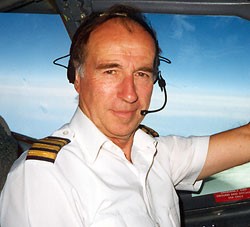
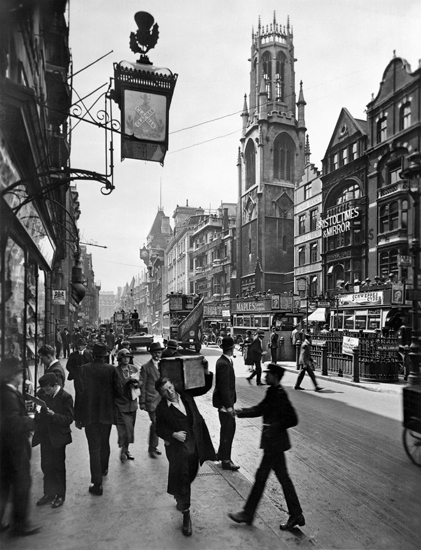 the 1939-45 war, like so many returned servicemen, he had become
restless and longed for something different to life in Fleet Street as a
newspaper scribe. My mother had died in 1939 at the young age of 33 and
meeting a vivacious Middle East beauty in Beirut in 1945, Laming senior
married again.
the 1939-45 war, like so many returned servicemen, he had become
restless and longed for something different to life in Fleet Street as a
newspaper scribe. My mother had died in 1939 at the young age of 33 and
meeting a vivacious Middle East beauty in Beirut in 1945, Laming senior
married again. 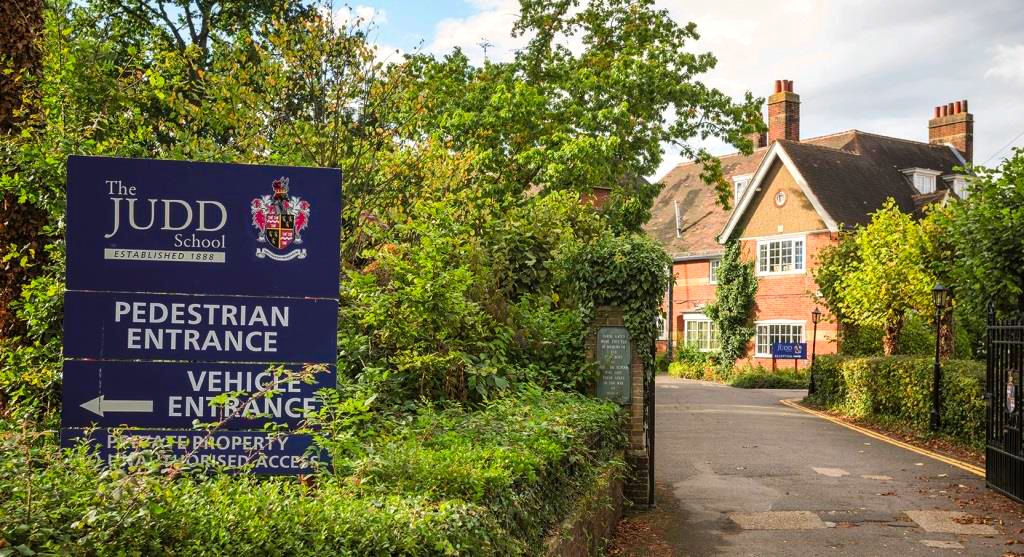 achievements. Then only a few months after I had settled in back at
Tonbridge, my father rang me from London and told me to pack my bags,
sell my bike and other personal effects and be prepared to leave England
for a new life in Australia. A few weeks earlier I had failed the
entrance examination into the Royal Air Force College at Cranwell and
this had disappointed my father greatly. I think he had counted upon
leaving me safe and secure in the RAF while he travelled the world in
search of adventure.
achievements. Then only a few months after I had settled in back at
Tonbridge, my father rang me from London and told me to pack my bags,
sell my bike and other personal effects and be prepared to leave England
for a new life in Australia. A few weeks earlier I had failed the
entrance examination into the Royal Air Force College at Cranwell and
this had disappointed my father greatly. I think he had counted upon
leaving me safe and secure in the RAF while he travelled the world in
search of adventure.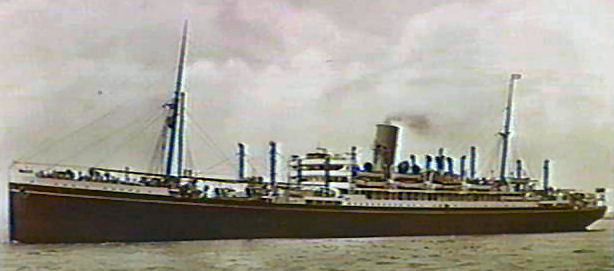
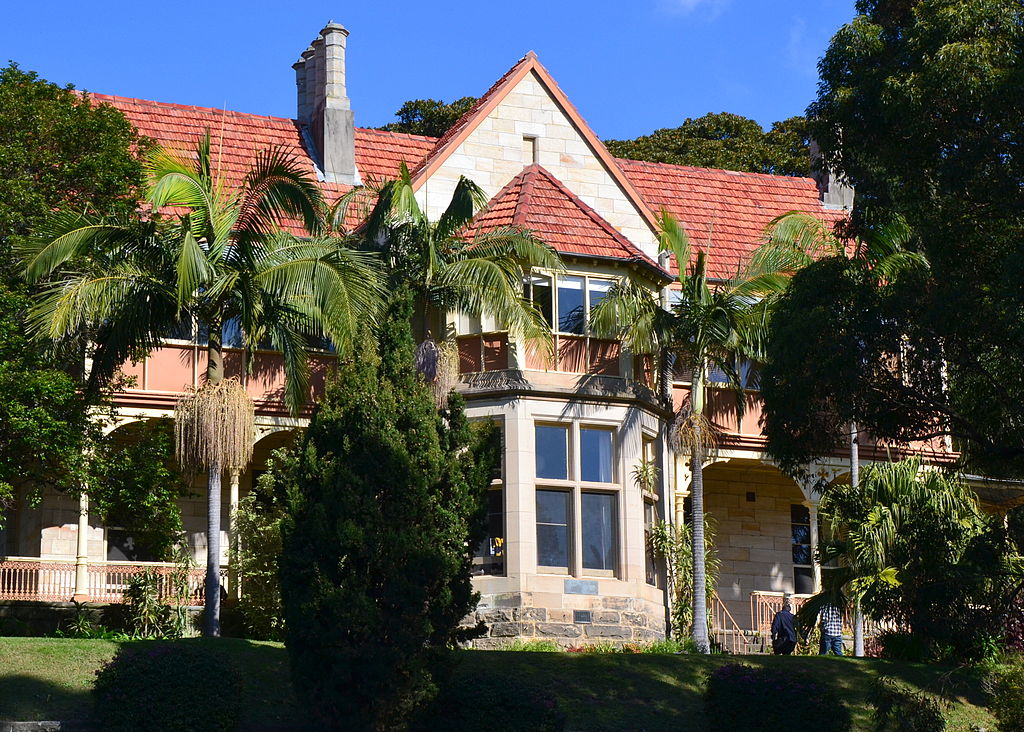 playing
cricket on a malthoid pitch in a picturesque little park overlooking
Sydney Harbour. It was called Cooper Park. When I asked to join
them for a hit (of cricket), I was sent in to bat and immediately
assailed with rearing head high bouncers from a lanky Italian lad named
Tony Buckini. Back home in England, this type of bowling would be
considered most unsporting – not so, apparently, at Cooper Park.
Despite this, there was much good humour and I soon learned to give as
good as I got. From that first day in Sydney, I remained friends with
those keen young cricketers for many years to come. One became a
croupier at Darwin Casino, another a travelling salesman, while a third
rose to be the Director of Education in NSW and the fourth member of our
little band became a veterinary surgeon. I eventually became a pilot.
playing
cricket on a malthoid pitch in a picturesque little park overlooking
Sydney Harbour. It was called Cooper Park. When I asked to join
them for a hit (of cricket), I was sent in to bat and immediately
assailed with rearing head high bouncers from a lanky Italian lad named
Tony Buckini. Back home in England, this type of bowling would be
considered most unsporting – not so, apparently, at Cooper Park.
Despite this, there was much good humour and I soon learned to give as
good as I got. From that first day in Sydney, I remained friends with
those keen young cricketers for many years to come. One became a
croupier at Darwin Casino, another a travelling salesman, while a third
rose to be the Director of Education in NSW and the fourth member of our
little band became a veterinary surgeon. I eventually became a pilot.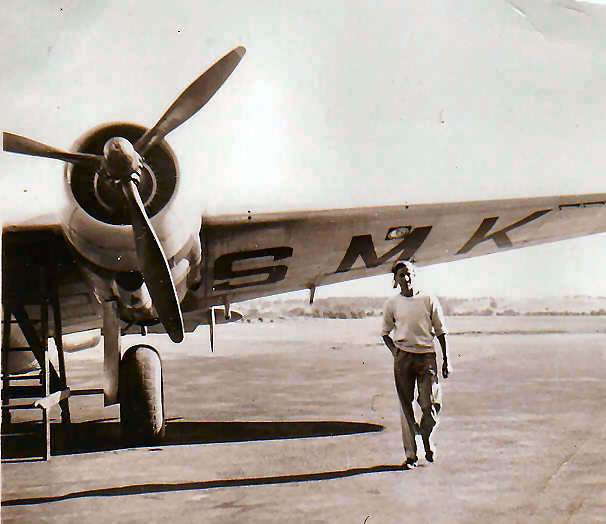 me established in a reasonably secure job before we had our own parting
of the ways. Harry Purvis agreed to take me on as a general hand and so
I became the first teenager to work there.
me established in a reasonably secure job before we had our own parting
of the ways. Harry Purvis agreed to take me on as a general hand and so
I became the first teenager to work there. 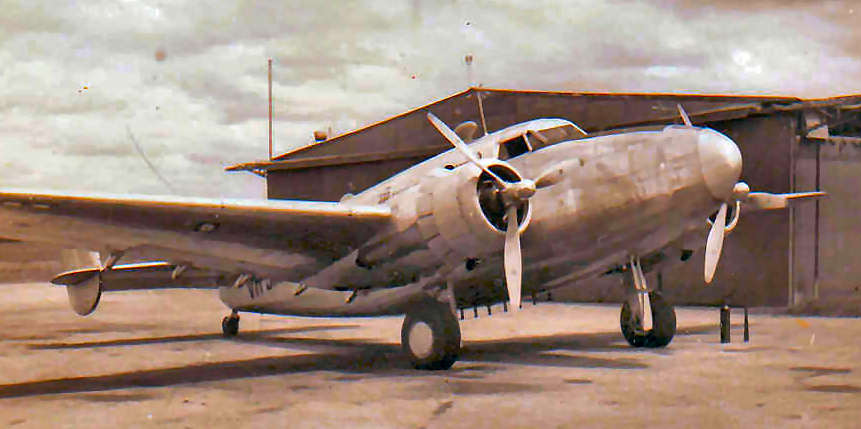
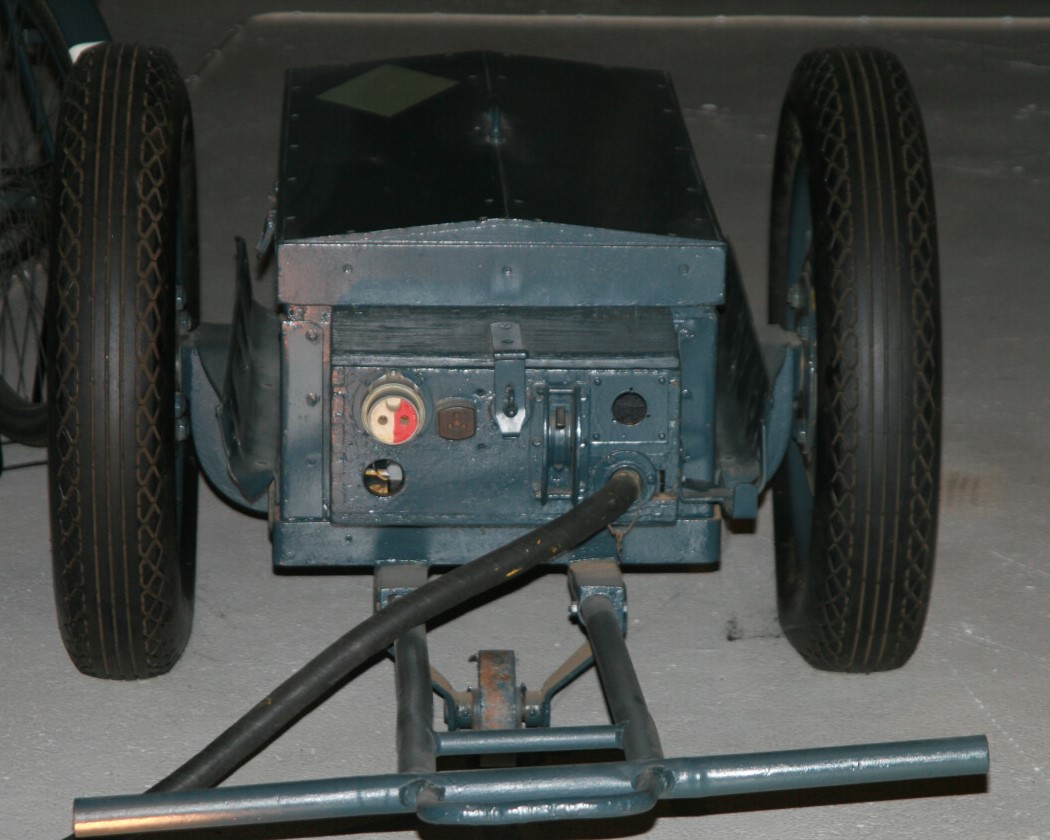 wheel, but rather an inch away to allow for the oleo compression with
weight. The slipstream was considerable even at idle power and if the
tarmac was wet from rain, it was easy to slip over. The whirling blades
of the propeller were mere inches from the chocks.
wheel, but rather an inch away to allow for the oleo compression with
weight. The slipstream was considerable even at idle power and if the
tarmac was wet from rain, it was easy to slip over. The whirling blades
of the propeller were mere inches from the chocks. 
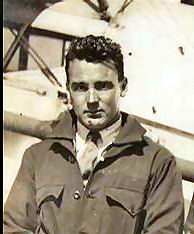 t
was obvious that something had gone seriously wrong during the take off
run causing the pilot to abort the take off. Although I reported the
incident to Harry Purvis (right) I never heard what really happened.
t
was obvious that something had gone seriously wrong during the take off
run causing the pilot to abort the take off. Although I reported the
incident to Harry Purvis (right) I never heard what really happened.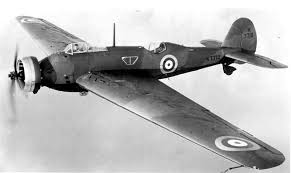
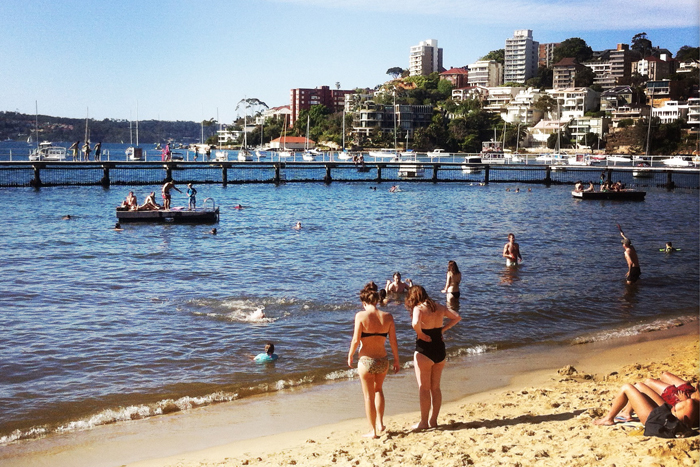 over the weir. Occasionally pilots and nurses would gather
in the evenings at the weir and as the wine flowed freely, there would
be much hilarity as they swung Tarzan and Jane like from a long rope
that swung from an over-hanging tree over the gently running waters
below.
over the weir. Occasionally pilots and nurses would gather
in the evenings at the weir and as the wine flowed freely, there would
be much hilarity as they swung Tarzan and Jane like from a long rope
that swung from an over-hanging tree over the gently running waters
below. 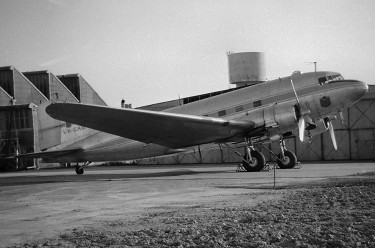
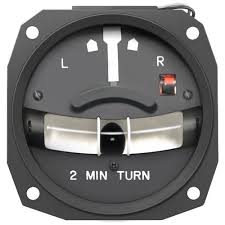
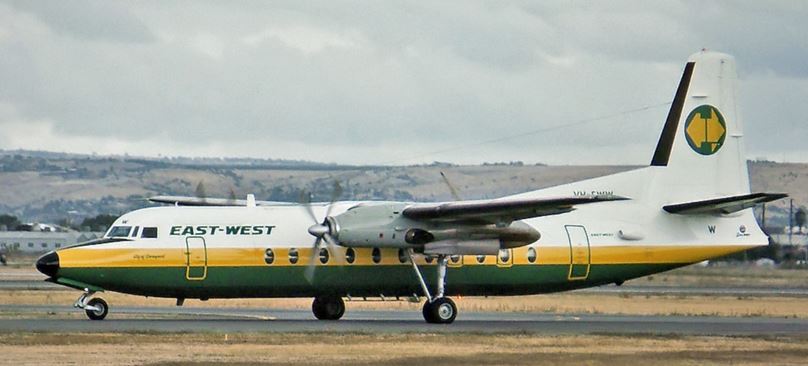
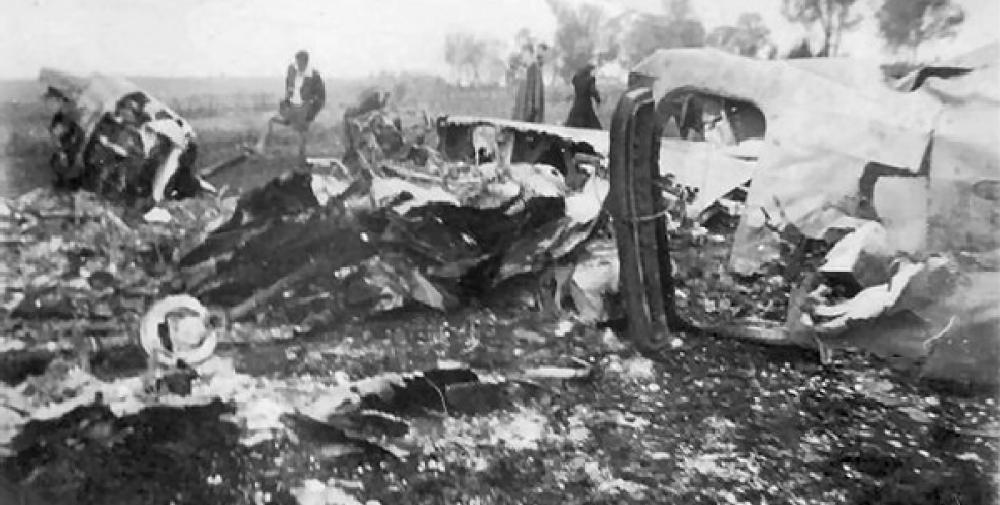
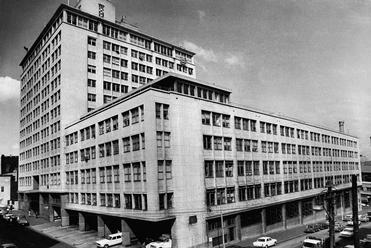
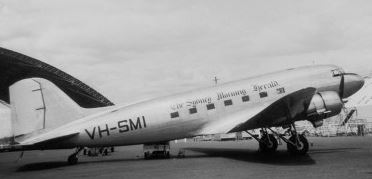
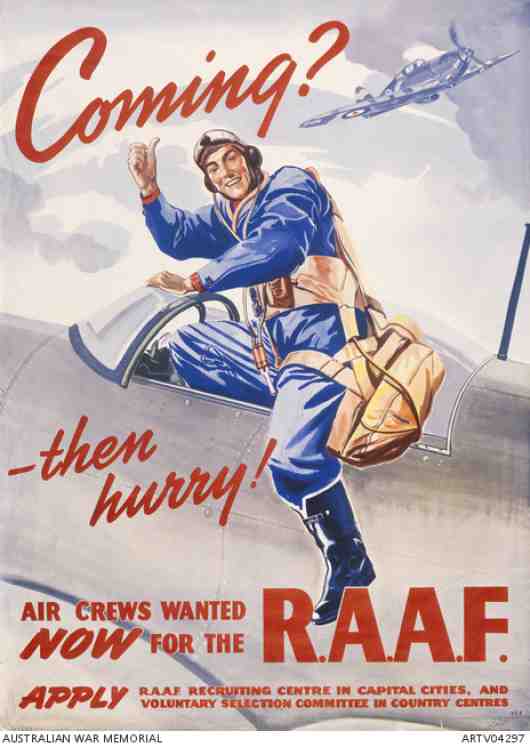
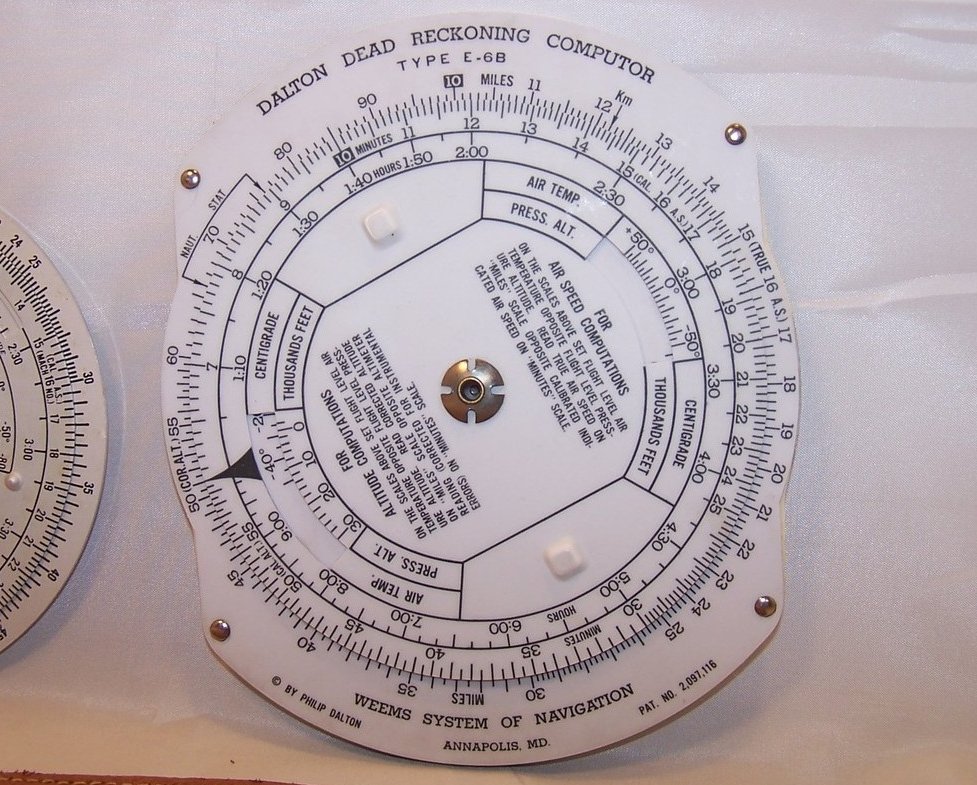 drastic measures. With the money saved from overtime I lashed out and
bought a new suit and tie, new shoes and flying lessons. With my
battered Dalton computer, also called a whizz wheel (right) in a paper
bag, I caught the train to Bankstown railway station and walked the mile
to the aerodrome. I recalled that Harry Purvis had flown an old Fokker
Universal named “Southern Cross” with the great “Smithy” and when I saw
the name Kingsford Smith Flying School over the door of a run-down
wartime building, I felt that was the place to start.
drastic measures. With the money saved from overtime I lashed out and
bought a new suit and tie, new shoes and flying lessons. With my
battered Dalton computer, also called a whizz wheel (right) in a paper
bag, I caught the train to Bankstown railway station and walked the mile
to the aerodrome. I recalled that Harry Purvis had flown an old Fokker
Universal named “Southern Cross” with the great “Smithy” and when I saw
the name Kingsford Smith Flying School over the door of a run-down
wartime building, I felt that was the place to start. 